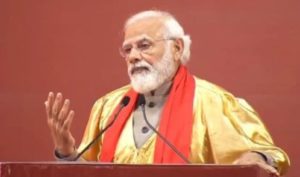
New Delhi, Dec 31 As per -CVoter Issues That Dominated India 2021, a net satisfaction rating of 36 was the lowest level reached by Minister Narendra Modi in the CVoter tracker survey since he became Prime Minister in 2014.
This was soon after the defeat in the West Bengal assembly elections and the shockwaves sent by the second wave.
In the -CVoter tracker, 58 per cent of urban and 61 per cent of rural voters said they were unhappy with PM Modi campaigning for elections during the second wave of the pandemic.
The pandemic, and the resultant economic woes did play a major role in the net satisfaction rating of Modi to go down to his lowest ever 36 per cent.
The lockdown in 2020 and the disruption in economic activities meant that the GDP of the country actually shrunk by more than 7.5 per cent in the financial year 2020-21. Worse, there were CMIE estimates that indicated that the unemployment rate actually crossed a massive 22 per cent at some point of time. No wonder, a -CVoter tracker survey in November 2021 indicated that while 28.5 per cent said there were no more threats of job losses; more than 33.5 per cent still feared the pink slip. But even at that lowest point, Modi was three times more popular than challenger Rahul Gandhi.
But the massive vaccination drive which was relaunched in June 2021 and the rapid economic recovery did mean that the popularity ratings of the Prime Minister started climbing again and slowly nearing the 50 mark. This is still far away from the highs touched soon after the 2019 Lok Sabha elections; but the underlying message is that a relatively unpopular Modi is still far more popular with the Indian voter at the national level than his rivals.




 Driving Naari Programme launched in Chandigarh
Driving Naari Programme launched in Chandigarh






























